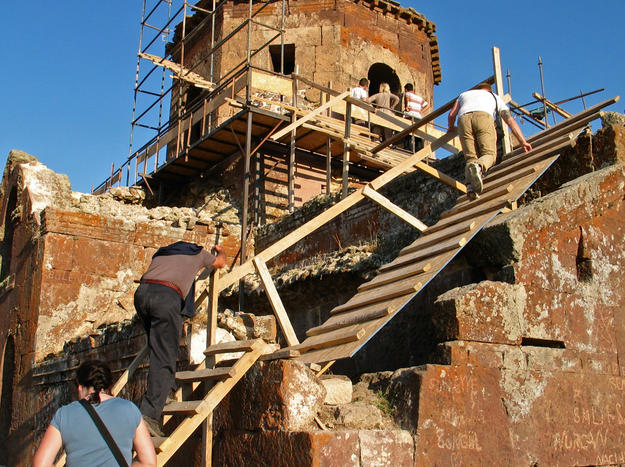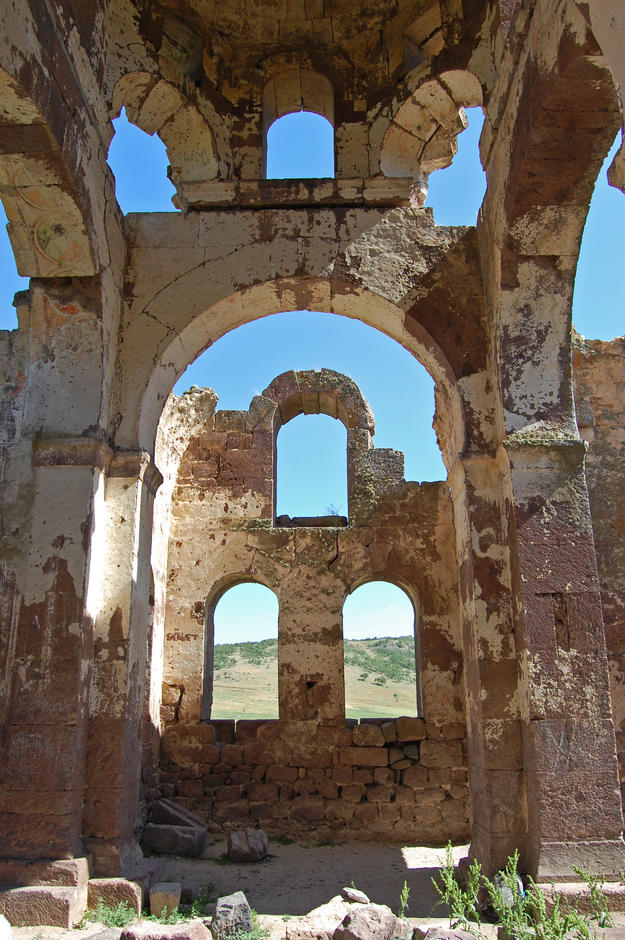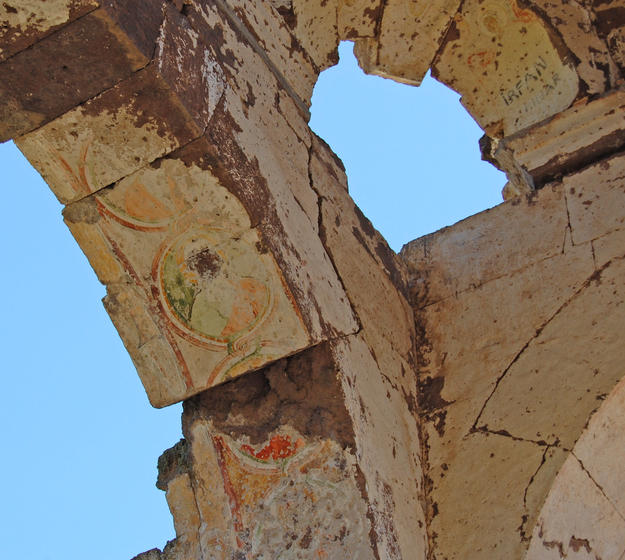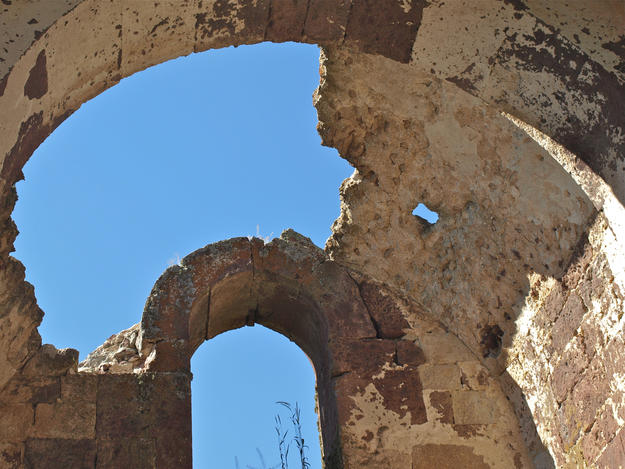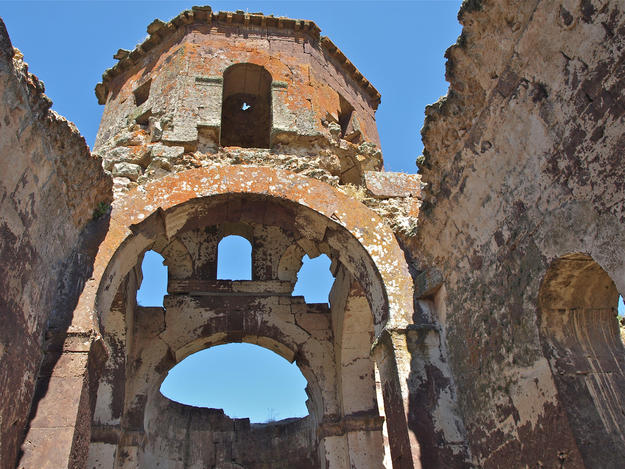Red Church
Kizil Kilise, also known as the Red Church, is one of the oldest churches on the vast plains of the Cappadocia region of Turkey. It was built in the sixth century during the reign of the Byzantine Emperor Justinian. Unlike other churches in the region carved from volcanic rock, Kizil Kilise’s structure employs traditional masonry building methods and exemplifies the high quality of craftsmanship of the area at that time. The central dome supported by an octagonal base is the most prominent architectural element of the church featuring various types of volcanic stone. Light illuminates the interior through windows located at the base of the building. Evidence of huge lintels and precisely cut granite blocks indicate that the church served as an imperial, or funerary, chapel and belonged to the family of St. Gregory of Nazianzus, a Church Father of Cappadocia. The site was also a stop for pilgrims on their way to Jerusalem.
2008 World Monuments Watch
Harsh winters and intense cold weather eventually led to the abandonment of the church long ago and has caused damage to Kizil Kilise’s structure. Goats have also contributed to the deterioration of church by climbing the structure and weakening nearby grounds while grazing. The church was included on the 2008 World Monuments Watch. Emergency efforts to conserve the roof were essential to prevent collapse of the structure, and WMF’s first priority in 2009 in collaboration with local partners, was to install scaffolding to strengthen the dome and unstable walls. Soil analysis was carried out to help rebuild the grounds and understand the effects on erosion on the church. Stabilization and conservation of the dome was successfully completed in 2012, and next steps include conservation work on the walls, as well as the improvement of site conditions for visitors.
Kizil Kilise is one of the earliest surviving Christian buildings in Turkey and demonstrates the important role the region has played over the centuries in religious, economic, and cultural development. While the region is best known for its rock-hewn churches and brilliantly decorated chapels carved into steep slopes, Kizil Kilise is particularly distinguished by the mere fact it is a freestanding ecclesiastical structure of significant size and obvious architectural merit, which speaks to its prominence in the life of the region at an earlier time.

